20 Common Shrimp Mistakes You’re Probably Making

Shrimp is one of the easiest proteins to cook—but also one of the easiest to mess up. Whether you’re grilling, sautéing, or tossing them in a salad, the difference between juicy perfection and rubbery disaster comes down to avoiding a few key mistakes. Here are 20 shrimp slip-ups to steer clear of—and how to fix them.
1. Buying Pre-Cooked Shrimp

Convenience often leads us to pre-cooked shrimp, but beware! Once reheated, they turn rubbery and lose their delicate texture. Imagine reaching for a shrimp cocktail only to find tough, overcooked morsels. Always start with raw shrimp for the best flavor and texture. Pre-cooked shrimp have already been cooked once and cannot withstand much more heat. Next time, grab a bag of raw shrimp and enjoy the succulent, juicy bites that will make your meal memorable. The freshness and flavor are worth the extra effort, promising a delightful culinary experience for you and your guests.
2. Not Deveining the Shrimp

That dark line down the back of a shrimp may not be harmful, but it certainly isn’t appetizing. Many people skip deveining, unaware they’re leaving a digestive tract in their dish. It’s a simple step that enhances both flavor and presentation. Picture a beautifully cleaned shrimp, free from unappealing lines, ready to dazzle on your plate. By taking the time to devein, you provide a cleaner, more enjoyable eating experience. Your guests will appreciate the effort, and the shrimp’s natural sweetness will shine through, untainted by the bitter taste of the vein.
3. Overcooking Them
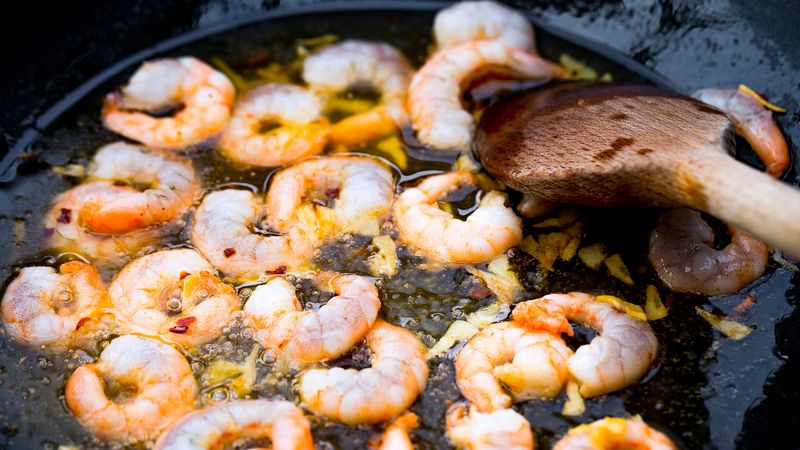
Shrimp cook at lightning speed, and the difference between perfection and rubbery disaster can be mere moments. Have you ever taken a bite, only to be met with an unpleasant chewiness? Shrimp should only curl slightly and turn a gentle pink. Overcooking leads to toughness and loss of flavor. Watch closely and remove them from heat as soon as they firm up and change color. Achieving that perfect texture requires vigilance and a keen eye. Your diligence will be rewarded with tender, juicy shrimp that melt in your mouth, offering pure culinary delight.
4. Thawing Shrimp at Room Temperature
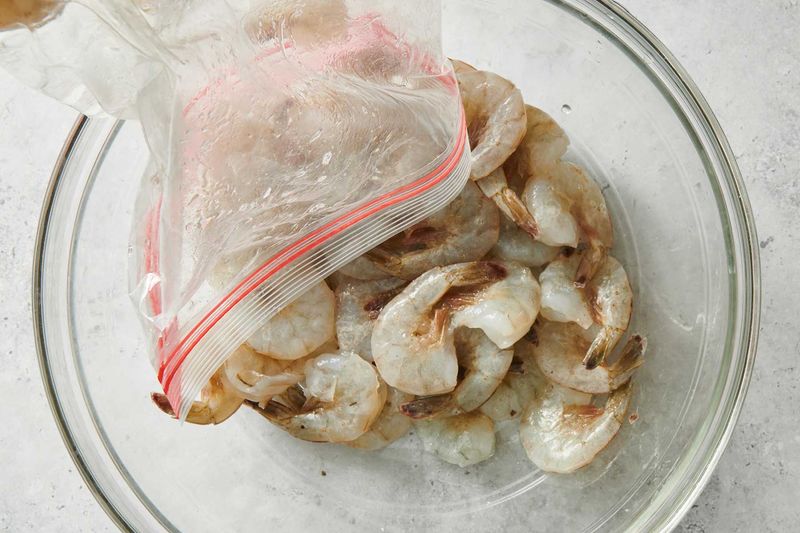
Thawing shrimp at room temperature is a common blunder that can lead to uneven thawing and even bacteria growth. Imagine planning a delicious meal, only to find your shrimp suspiciously warm and partially thawed. Always thaw shrimp in the refrigerator overnight or under cold running water for safety. This method ensures even thawing and maintains the shrimp’s quality. Your patience will pay off with shrimp that are safe to eat, delightfully tender, and ready to be the star of your dish. It’s a small step for big flavor and peace of mind.
5. Leaving the Shells On

Leaving the shells on shrimp can be a double-edged sword. While they add flavor and protect during grilling, removing them later can be a hassle. Imagine a diner struggling to peel shrimp in their elegant attire. If the shells aren’t part of your plan, peel them beforehand to avoid frustration. However, if you’re preparing a broth, soup, or grilling, keeping the shells can enhance the dish. Decide based on your culinary goal, and remember that pre-peeling saves time and effort later, ensuring a smooth dining experience for everyone involved.
6. Peeling Them Before Cooking
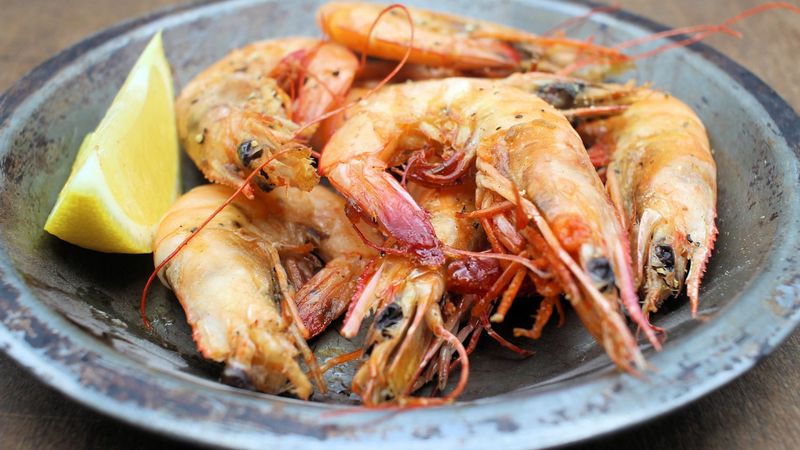
Peeling shrimp before cooking is a common misstep when seeking moist, flavorful results. Picture shrimp locked in steam, their shells preserving moisture and infusing taste. Removing the shells too soon can strip them of these benefits. For dishes like curries or garlic shrimp, leave the shells on during cooking for flavor and moisture retention. This technique acts as a natural barrier, protecting the delicate meat. Once cooked, the shells slip off easily, revealing perfectly cooked shrimp with enhanced taste. It’s a simple trick for more succulent, savory shrimp every time.
7. Not Drying Them Before Cooking

Damp shrimp lead to disappointment on the stovetop, where wetness translates to steaming rather than searing. Have you ever expected a crispy crust only to end up with soggy shrimp? Patting them dry is a crucial step often overlooked. This small act ensures a beautiful sear, golden and appetizing. By removing excess moisture, you allow the shrimp to develop that desirable crust, adding texture to your dish. Next time you’re prepping shrimp, take an extra moment to dry them off, and savor the incredible difference in their taste and appearance.
8. Crowding the Pan
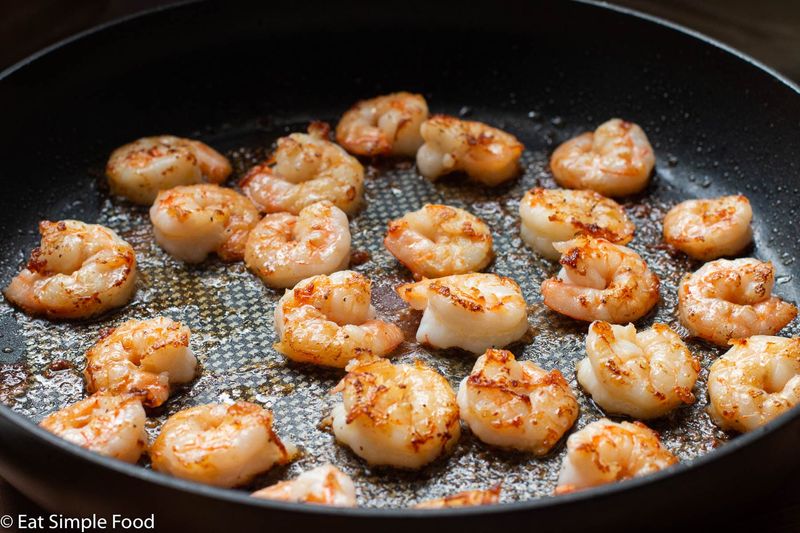
Crowding the pan is a rookie mistake that leads to steaming instead of searing. Imagine a pan brimming with shrimp, each piece fighting for space. Without room to breathe, they end up pale and soggy. For that perfect golden crust, give each shrimp its personal space. Cook in batches if necessary, ensuring they have room to sizzle and sear. The result will be beautifully browned shrimp, each with its own crispy personality. A little patience goes a long way in creating a plateful of shrimp that’s as visually pleasing as it is delicious.
9. Using Too Much Heat for Too Long

High heat is a friend to shrimp, but only for a fleeting moment. Imagine a pan of shrimp glowing with potential, only to be overcooked into rubbery bits. The secret is in the timing—just a minute or two of high heat, then swiftly off the stove. This precise control ensures shrimp remain tender and succulent. Overdoing it leads to disappointment, with tough shrimp that lack that delightful bounce. Master the art of timing, and your shrimp will reward you with a juicy, flavorful experience, leaving your guests clamoring for more.
10. Marinating Too Long
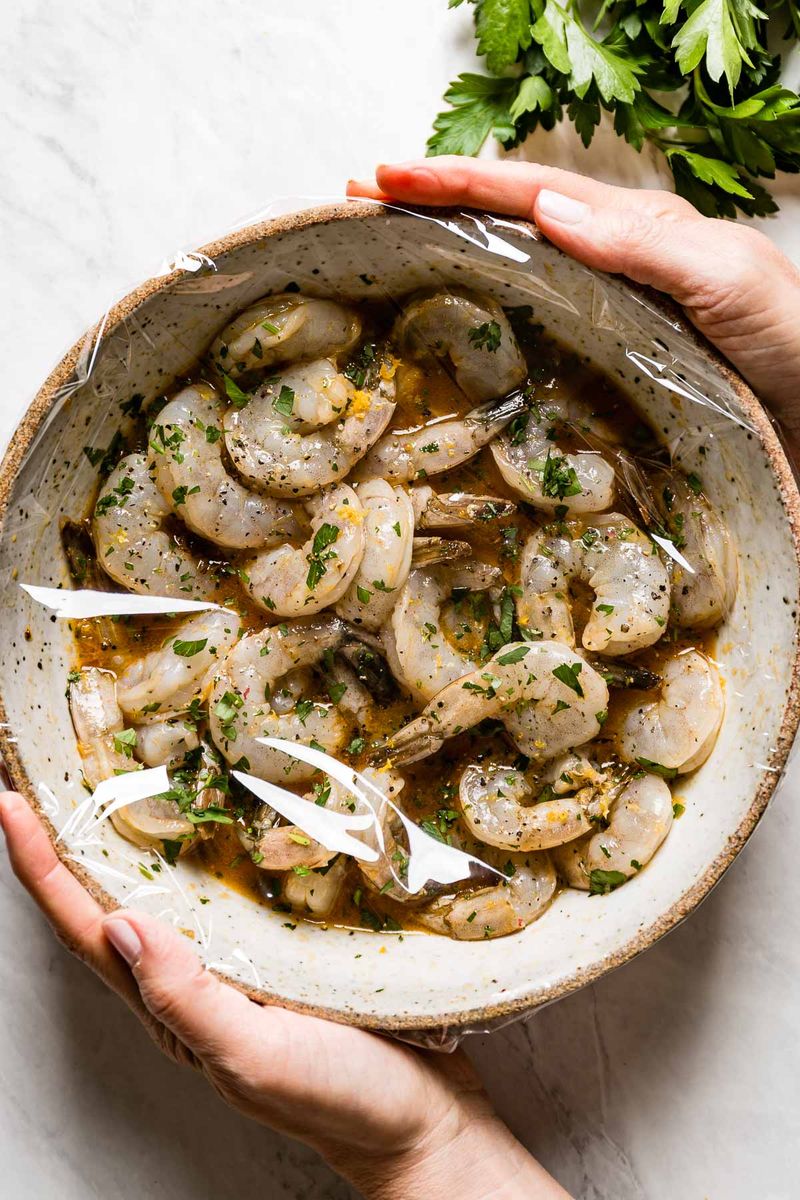
Marinating shrimp can enhance flavor, but leave them too long, and they turn mushy. Imagine expecting flavorful shrimp, only to find a texture more akin to paste. Acidic marinades, like lemon or vinegar, begin to “cook” the shrimp, breaking down proteins. Limit marinating time to 15–30 minutes to preserve texture. This short soak allows flavors to penetrate without compromising firmness. A well-marinated shrimp offers the perfect balance of taste and texture. Next time, watch the clock, and enjoy shrimp that’s bursting with flavor and ready to delight your taste buds.
11. Not Seasoning Enough

Shrimp’s mild nature cries out for bold flavors. Picture a plate of unseasoned shrimp, bland and uninspiring. It’s a missed opportunity to elevate your dish. Don’t shy away from spices, garlic, citrus, or herbs. Each adds personality and depth, transforming shrimp into a culinary masterpiece. Think of shrimp as a blank canvas, eager to absorb the colors and flavors you offer. With a generous hand, sprinkle your chosen seasonings, and watch as your shrimp come alive with taste and aroma. The result will be vibrant shrimp, rich in flavor and character.
12. Using Low-Quality Shrimp

The quality of shrimp directly impacts your dish’s success. Imagine eager anticipation, dashed by the fishy, mushy taste of low-quality shrimp. Opt for wild-caught or sustainably farmed options for superior taste and texture. Poorly frozen shrimp can disappoint, but quality shrimp elevate your meal to new heights. They offer a clean, fresh flavor that’s unmistakable. Investing in good shrimp is investing in your dish’s success. Your palate will thank you for choosing quality over shortcuts, delivering a dining experience that’s as satisfying as it is delectable.
13. Not Removing the Tails
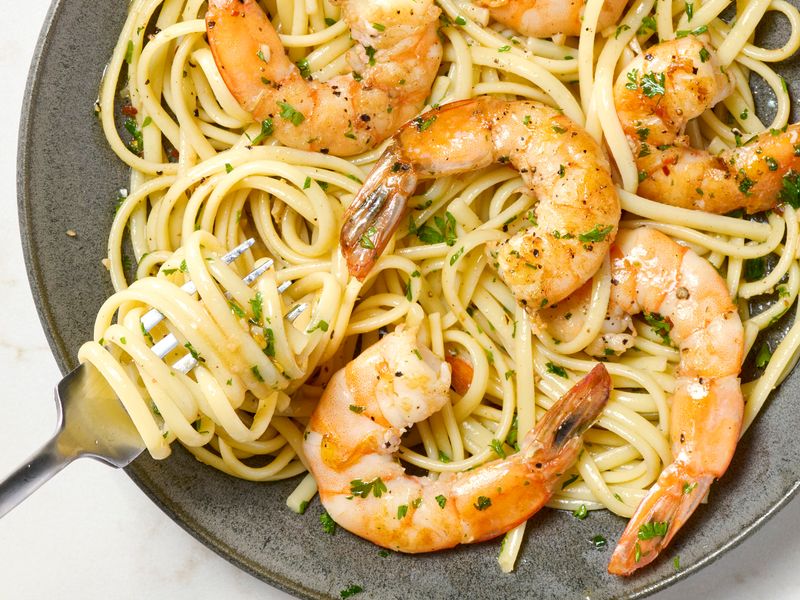
Tails on shrimp can look elegant, but in practical dishes like pastas or stir-fries, they become a hindrance. Imagine diving into a flavorful bowl, only to awkwardly pluck out tails mid-bite. Remove them when the tails serve no purpose for presentation. Your diners will thank you for the seamless experience, free from distraction. In dishes where shrimp are mixed into the ingredients, tail removal simplifies eating, allowing the focus to remain on enjoying the blend of flavors. It’s a small detail with a big impact on dining pleasure.
14. Using Old Shrimp from the Freezer

Frozen shrimp have a limited shelf life, and using old shrimp can ruin a dish. Imagine opening a freezer bag, only to be greeted by a foul odor or visible freezer burn. Quality declines over time, so always check dates and condition. Freshness matters, even when frozen. Discard shrimp that look or smell off, and prioritize freshness for the best results. Your efforts will be rewarded with shrimp that retain their flavor and texture, enhancing every meal with their integrity. Trust your senses, and keep your dishes delicious and safe.
15. Forgetting to Rinse Frozen Shrimp
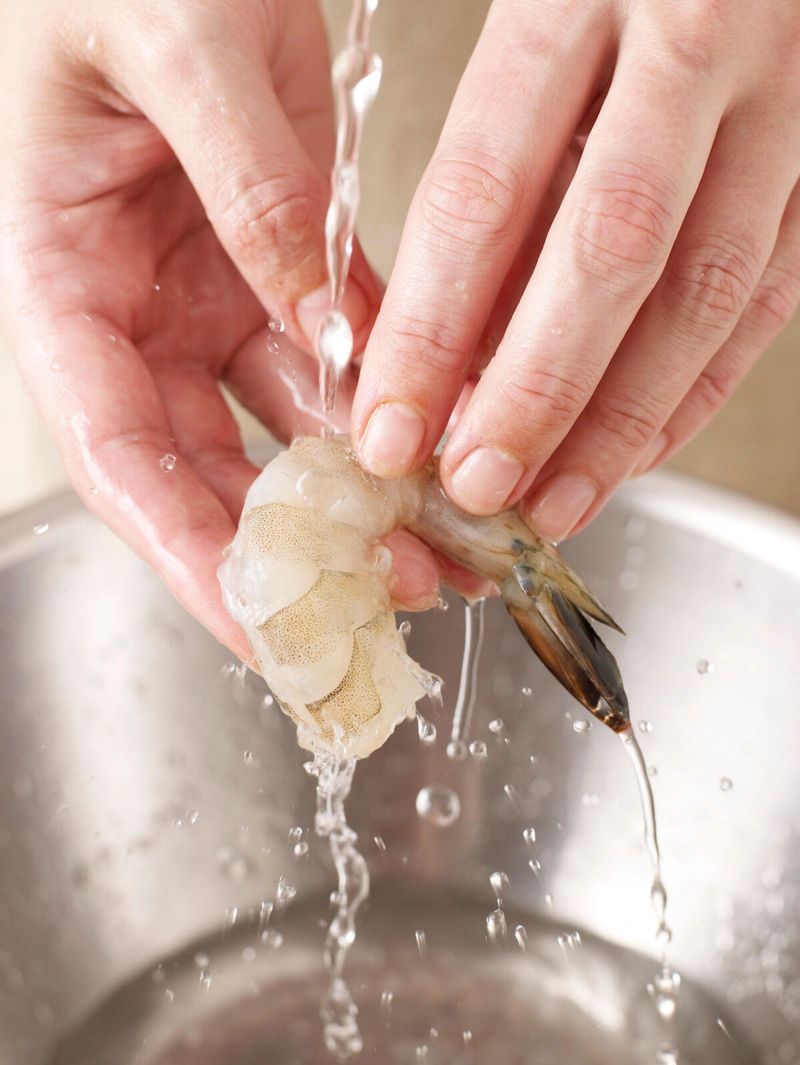
Frozen shrimp often come with an ice glaze or preservatives that need rinsing off. Have you ever skipped this step, only to notice an odd taste? A quick rinse under cold water removes unwanted residues, ensuring a clean start. It’s a simple task with a significant payoff, allowing the shrimp’s natural flavor to shine. By cleaning them properly, you set the stage for success, whether they’re starring in salads, pastas, or on their own. Next time you reach into the freezer, remember to rinse, and enjoy shrimp at their finest.
16. Cooking Shrimp Straight from Frozen
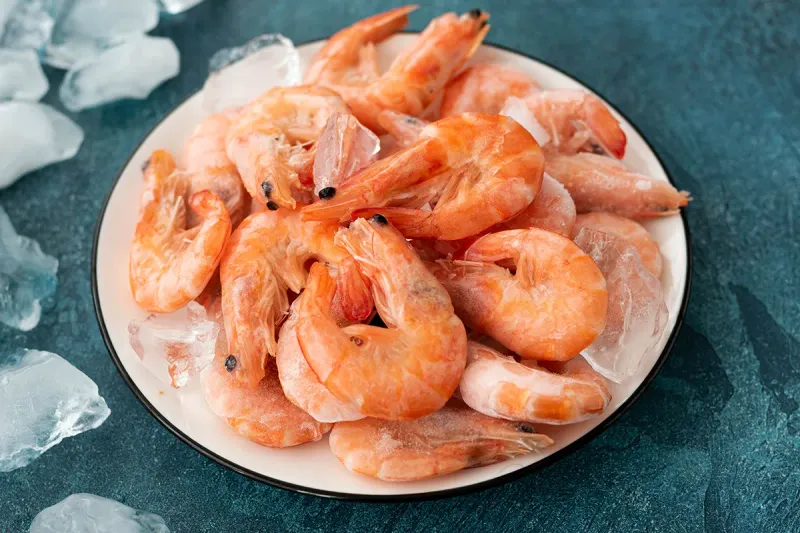
Cooking shrimp straight from the freezer is a common mistake leading to uneven results. Have you ever bitten into a shrimp that’s cooked on one end and icy on the other? Always thaw shrimp before cooking unless the recipe specifies otherwise. Proper thawing ensures even cooking, allowing each shrimp to reach its full potential. This simple step transforms your dish, offering consistency and quality. With fully cooked shrimp in every bite, you deliver a meal that’s as delightful to eat as it is to prepare. Patience pays off with perfect results.
17. Skipping the Quick Brine

A quick brine with salt and baking soda can transform shrimp, making them tender and bouncy. Imagine skipping this step, only to find your shrimp lacking that signature snap. In just 15 minutes, a brine enhances texture and flavor, ensuring shrimp that stand out. The salt penetrates, while baking soda boosts tenderness, offering a texture that’s both firm and yielding. This brief soak is a game-changer, turning ordinary shrimp into extraordinary morsels, delighting with every bite. Embrace the brine, and enjoy shrimp that’s elevated in every way.
18. Not Tasting As You Cook

Taste is the compass in the kitchen, and not tasting as you cook is a missed opportunity. Imagine serving shrimp with an unbalanced sauce or glaze, wishing for more salt or spice. By tasting along the way, you adjust to perfection, creating harmony in flavors. It’s a practice that ensures each dish is uniquely yours, crafted with care. With each taste, you refine, bringing your culinary vision to life. Whether sweet, spicy, or savory, let your palate guide you, ensuring shrimp that are deliciously aligned with your intent.
19. Using the Wrong Cooking Method

Each shrimp type has a preferred cooking method, and using the wrong one can lead to lackluster results. Imagine chewy shrimp that could’ve been tender if only grilled instead of boiled. Match the method to the shrimp for best outcomes. Whether they’re destined for the grill, pan, or pot, the right technique enhances their natural qualities. By choosing wisely, you highlight their flavor and texture, presenting shrimp at their most delicious. It’s a culinary decision that speaks to your understanding and respect for the ingredients, ensuring every bite is a pleasure.
20. Ignoring the Size Labels

Shrimp sizes vary, and ignoring size labels can lead to cooking mishaps. Imagine following a recipe for jumbo shrimp, only to end up with overcooked tiny ones. Size guides cooking time and method, ensuring each shrimp reaches perfection. Pay attention to labels, and adjust your approach. Whether small or large, each size has its own culinary needs. By acknowledging these differences, you craft dishes that are consistent and delicious, respecting the unique character of each shrimp. It’s a detail that defines the success of your shrimp-centered creations.
